Yellow spots on the leaves of cucumbers indicate that the plant needs help. You can’t ignore the signal - you will be left without a crop. But you do not need to breed chemicals immediately, first you need to figure out - for what reason the leaves were covered with red spots. Sometimes it’s enough to change the watering mode or just weed the bed.
Content
Causes of yellow spots on the leaves
The goal of any gardener is to preserve the crop. Spots on the leaves of cucumbers in the greenhouse or on the open ground can be called a symptom of impaired growth and vegetation. Even if the fruits can be partially preserved, they will not be juicy enough, twisted, bitter. And next year, the seedlings planted at this place will die. What to do when yellow spots on the leaves of cucumbers, depends on the type of defects, sizes and conditions under which the culture is grown. You need to inspect the entire lash, check the quality of irrigation, analyze what time the surrounding plants obscure the cucumbers, how long they have to be in the shade.
Most often, fungal diseases affect the root zone. This area needs to be given increased attention. Next, flip the leaf plates and look at the veins, this is the most vulnerable area.
Illumination
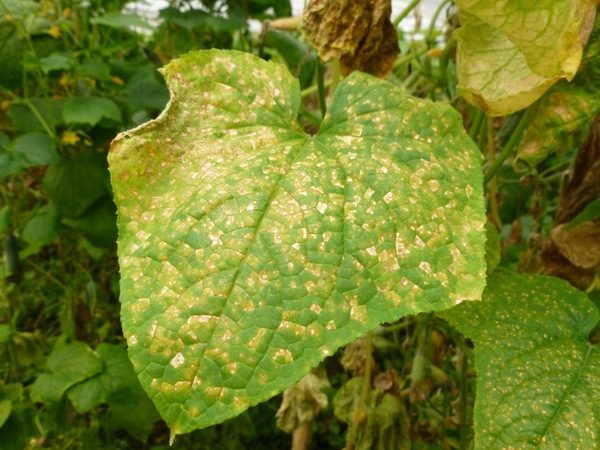 Leaves turn yellow when there is a lack of light or when the plant is in direct sunlight all day. In the first case, the leaf plates of the lower part of the bush suffer more, and those that are higher turn pale. In the case when there is more light than necessary, the yellow spots resemble burns. The area of the defect dries and thins.
Leaves turn yellow when there is a lack of light or when the plant is in direct sunlight all day. In the first case, the leaf plates of the lower part of the bush suffer more, and those that are higher turn pale. In the case when there is more light than necessary, the yellow spots resemble burns. The area of the defect dries and thins.
Humidity and temperature differences
With regular watering, plants planted in a greenhouse do not suffer from dehydration. Frames with a film reduce the rate of evaporation. Open ground, especially in hot weather, dries quickly. Humidity is determined not only by the frequency and abundance of irrigation, but also by air temperature, season, climate of the area, and the amount of natural rainfall.
Yellowing of a leaf plate with a lack of watering starts from the edge - it looks like a dry edging. Then the color change extends to the entire surface and to the lash. First of all, the tips of the shoots suffer. The optimum humidity for cucumbers is 75%. If it is lower, growth stops and you can’t wait for cucumbers.
The plant changes color with sudden changes in temperature. If during the day 22-30 ° C, and at night - 16-18 ° C, the interval is acceptable. It is not bad when the day is not very hot, and at night the temperature drops by no more than 4-8 ° C.In other cases, the plant either dries up or stops developing. In the cold summer, seedlings are planted only in hotbeds or covered with a film of the plant.
With frequent moistening in small portions, the moisture does not have time to absorb and saturate the root system, most of it evaporates. With abundant rare watering, foliage reddens, the fruits become bitter. If the pressure is too high, the basal neck is exposed, because of the spray on the leaves yellowish patterns and spots on the cucumbers form, like burns.
Plant infection
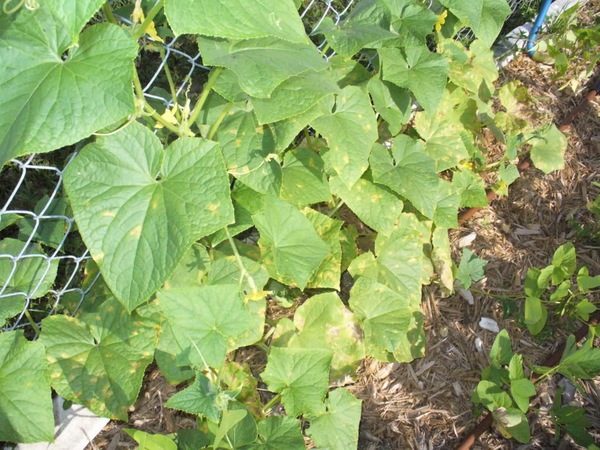 Each cucumber diseasehas characteristic symptoms. The photo will help determine the cause of the defect:
Each cucumber diseasehas characteristic symptoms. The photo will help determine the cause of the defect:
- Cucumber mosaic, viral etiology. Leaf plates are covered with dots, which gradually increase and turn into stains. There are several types of mosaics - tobacco, green, white, speckled, ordinary. The cause of the disease is that viruses that destroy chloroplasts are introduced into the plant tissue.
- Downy mildew, or peronosporosis, begins after infection with fungi. Cucumbers on top of the leaves turn yellow, become covered with spots of irregular shape (square or rectangular) of red color, and on the underside there is a coating of bluish, whitish, and lilac. The bark is cracked, the tone of the shoots is lost, the bud ovaries fall off, the formation of the fruits stops.
- Copper, or anthracnose, will appear during the spread of colletotrichum spores. A parasitic culture develops in all parts of the plant. Dark spots form on the basal area, the lashes become soft, easily break off. First, you can notice yellow spots on the lower leaves of the cucumber, then the whole plant is affected. The defective areas are quite large, up to 4 cm in diameter, delaminate, crumble, due to which the sheet plate becomes patterned. The optimal conditions for the development of fungal culture are temperatures above 25 ° C against a background of high humidity.
- Cladosporiosis also has a fungal etiology. This pathogen loves coolness, develops rapidly in stagnant air, and therefore prefers to settle in greenhouses. The disease can be detected by the appearance of dotted blots of yellow color, which gradually increase and merge into spots.
- Alternirrosis. If the plant is infected with spores, slightly convex dry spots appear on the bottom. More often affects seedlings in greenhouses, prefers seedlings located near the entrance.
Pests
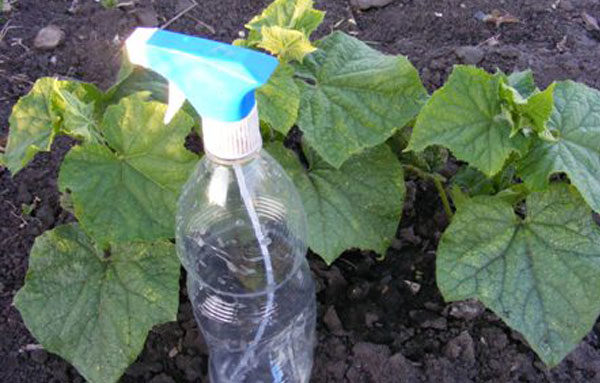 The appearance of yellow spots on the leaves of cucumbers cause pests. The following signs indicate infection:
The appearance of yellow spots on the leaves of cucumbers cause pests. The following signs indicate infection:
- Spider mite. The sticky surface of the underside of the leaf plate is due to cobwebs and small light specks on the top.
- Aphid. It is difficult to notice these small translucent insects, but a viscous film on the surface of plant parts indicates infection. This is a copper span, a liquid secreted by insects. Ants love her.
- Whitefly A translucent insect that looks like a moth or white fly. Like aphids, it feeds on the sap of the plant.
- Sprout fly. By itself, it is not dangerous, but lays eggs in the axils of the leaves and cracks of the bark. Hatched larvae destroy young leaves.
- Slug. They gnaw at the whips, causing untimely "leaf fall" and wilting.
No less harm is caused by cucumber mosquitoes or a gall nematode.
Incorrect fertilizer application
Cucumbers definitely need top dressing. Oversupply leads to decay, a deficiency leads to impaired growth and vegetation.With a lack of manganese and iron, veins darken, wilting and yellowing of the upper leaves indicate a deficiency of magnesium, and a lack of potassium and magnesium - the pale twisted edges of the leaf plates.
The safest reason for the appearance of yellow spots on the leaves of cucumbers is the aging of the plant. This is a natural process, and there is no need to fight it. Although there are methods for rejuvenating the bush.
Treatment methods
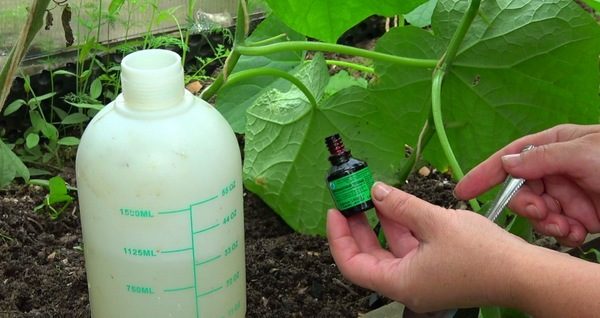 Gardeners decide for themselves which methods to use: spray with chemicals or apply alternative recipes. But still, first you need to take care of normal lighting, as well as remove damaged parts, tie up the scourges so that sunlight evenly falls on them, cut off the interfering branches. If yellowness appeared on a young seedling, it is thinned or transplanted.
Gardeners decide for themselves which methods to use: spray with chemicals or apply alternative recipes. But still, first you need to take care of normal lighting, as well as remove damaged parts, tie up the scourges so that sunlight evenly falls on them, cut off the interfering branches. If yellowness appeared on a young seedling, it is thinned or transplanted.
Humidification must be stable. It is recommended to water once every 2-3 days, focusing on weather conditions. The norm of water at 12 m is 1 bucket. I can’t come to the garden site more often, they close the garden bed with agrofiber to reduce evaporation, or sprinkle with mulch.
In case of heavy rains, a mulch of sand or sawdust absorbing water will also help. The topsoil is loosened to enhance evaporation. It is watered either in the morning, or after 17-18 hours, directing the stream under the roots. As already mentioned, due to splashes falling on the whips, spots form on cucumbers and leaves.
Plant disease control
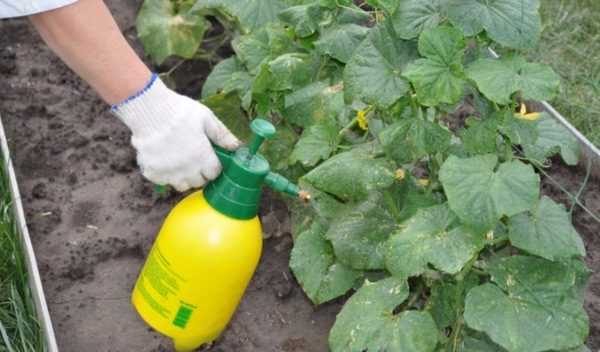 To cure a plant when infected with fungal diseases, it must be treated from the roots to the upper shoots:
To cure a plant when infected with fungal diseases, it must be treated from the roots to the upper shoots:
- To combat powdery mildew, Topaz, Fundazole, Fitosporim, bacterial biofungicides are used. The most safe biological products are rhizoplan, Gamair, Alirin-B and the like. If children and pets are constantly on the site, it is better to use folk remedies. For example, spray with a soap-and-ash solution: half a glass of ash and 100 g of laundry soap in a bucket of water, insist 2 days. Another way is to treat with whey or sour kefir.
- It is ineffective to treat anthracosis according to home recipes; chemical preparations are needed. This group includes Ridomil, Quadris, Skor, Acrobat, Oksikom.
- To suppress the spread of cladosporiosis, plantings must be treated with copper preparations. These include Bordeaux fluid and Hom. Folk remedies will help only at the first signs of the disease. Mix 2 liters of milk, 60 drops of iodine, 40 g of grated soap, insist 6 hours, spray the plant every 10 days until the ovaries. Another method is to pour 50 g of crushed garlic 1 liter of warm water, leave for a day.
- For the treatment of alterniriosis that develops on cucumbers planted in the open ground, the same means are used as against Kladosporioz. At the first symptoms of the disease, Polyram is used in the greenhouse.
Even if the plant was saved, after the end of the garden season all lashes should be burned, the garden bed should be cleaned, reprocessed with chemicals. You can plant cucumbers not earlier than after 4 years. When using fungicides, carefully follow the instructions.
Insect killing
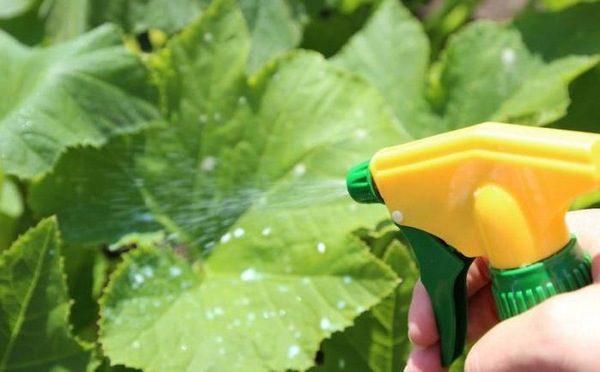 Gardeners prefer to fight pests with folk remedies. The most effective ways:
Gardeners prefer to fight pests with folk remedies. The most effective ways:
- Against a spider mite - spraying with a solution of laundry soap or liquid ammonia.
- Aphids do not like pungent odors. Plants are treated with infusion of tobacco or citrus zest. To make a “cure” of tobacco, they take it out of the Prima pack, fill it with 5 liters of water, insist for a day. A saturated solution of dried peels of lemons or oranges is done as follows: pour crusts (0.5 l can) 1 liter of boiling water, let stand for a day, and then boil for 10 minutes. Before spraying, dilute in 10 l of water.
- Traps will help cope with whiteflies.You can hang sticky tapes for flies or pieces of cardboard greased with a mixture of honey and vegetable oil.
- Sprout fly. These pests cannot be dealt with without insecticides. For spraying use Fufanon, Detox, and for seed treatment - Spark, Attelik. A wide spectrum of action in Cyperus.
- The slugs are harvested by hand, the beds are treated with liquids with a pungent odor or bio-stocks manufactured under industrial conditions.
So that the leaves do not turn yellow, it is necessary to feed the area on which it is planned to plant cucumber seedlings in the fall. Use organic matter, humus, wood ash or silage, and water with urea. If you encounter a problem after planting, you can use this method: dissolve 25 g of ammonium nitrate in a bucket of water and water the bed 2-3 times with an interval of 7-10 days. To enhance the effect, the soil is treated with a solution of Nitroammofoski. Proportions of breeding: 1 tbsp. l. / 8-10 l of water.
Yellow leaf prophylaxis
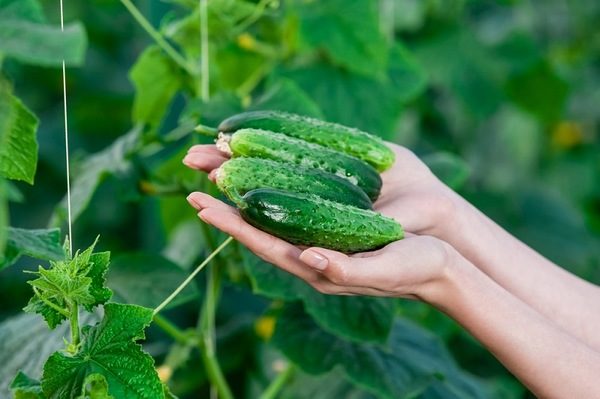 So that the leaves of cucumber lashes do not turn yellow in hot weather, you need to ensure that the soil does not dry out, air enters the root system. To do this, the beds are regularly watered, after heavy rains they remove excess water, loosen the soil crust. Disinfect the planting material, treat with fungicides beds. Weeds and dried leaves are removed in time. Thinning is too dense thickets, if seedlings sprouted heap.
So that the leaves of cucumber lashes do not turn yellow in hot weather, you need to ensure that the soil does not dry out, air enters the root system. To do this, the beds are regularly watered, after heavy rains they remove excess water, loosen the soil crust. Disinfect the planting material, treat with fungicides beds. Weeds and dried leaves are removed in time. Thinning is too dense thickets, if seedlings sprouted heap.
Spraying is carried out not only when problems arise, but also with a preventive purpose. As soon as the seedlings have taken root and the first sheets (3-4) have appeared on it, they are treated with a solution based on grated laundry soap, iodine, milk. Proportions: 20 g / 3 drops / 1 liter. Bred in a bucket of water, spray the plant 3 times after 10 days. When flowering began, the lashes are treated with an alkaline solution - 1 tbsp. l soda per 1 bucket of water. These measures will help prevent fungal infection.
To prevent a deficiency of nutrients, fertilizers are applied (before use, you need to read the instructions). If cucumbers are planted in a greenhouse, it is necessary to maintain a constant temperature and humidity, and control lighting. A timely response to a change in the color of the leaves will help preserve the crop.

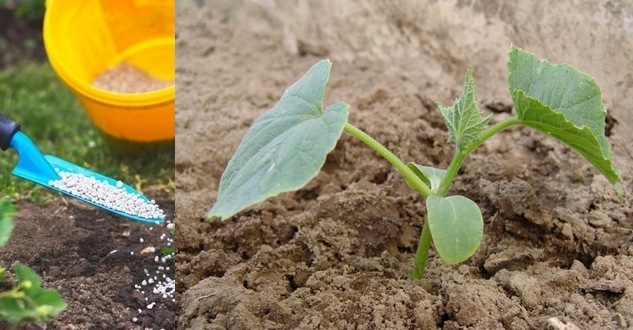
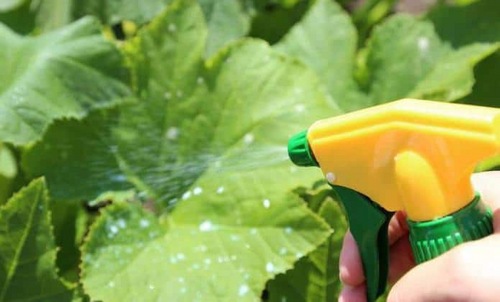
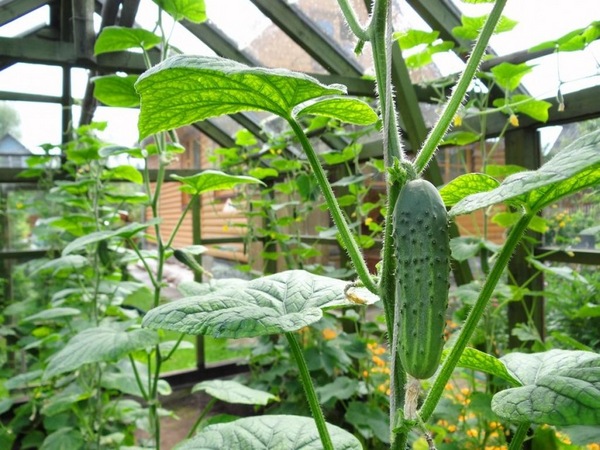
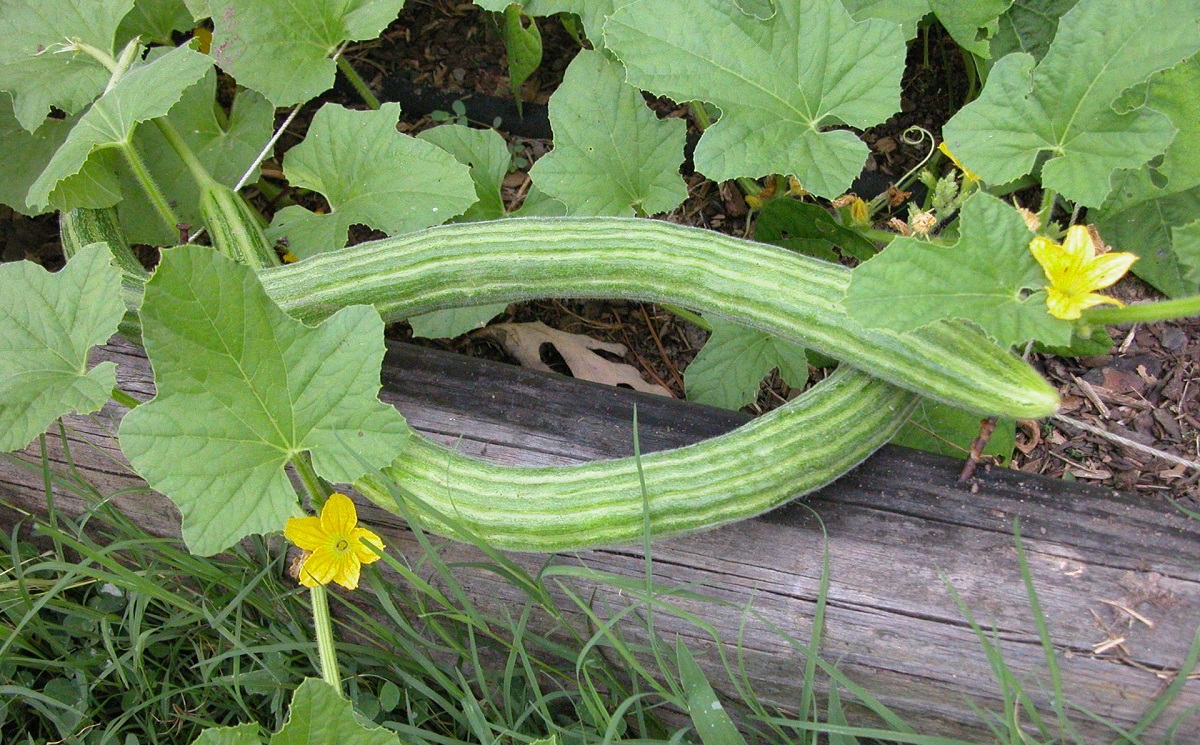 Armenian cucumber with melon flavor: description and characteristics, reviews
Armenian cucumber with melon flavor: description and characteristics, reviews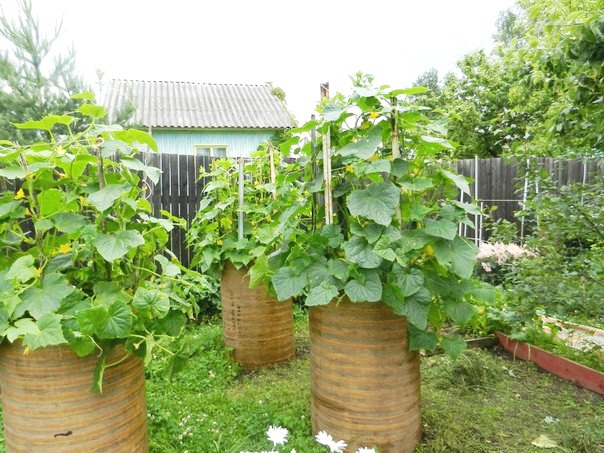 Do-it-yourself vertical beds for cucumbers: schemes, photos
Do-it-yourself vertical beds for cucumbers: schemes, photos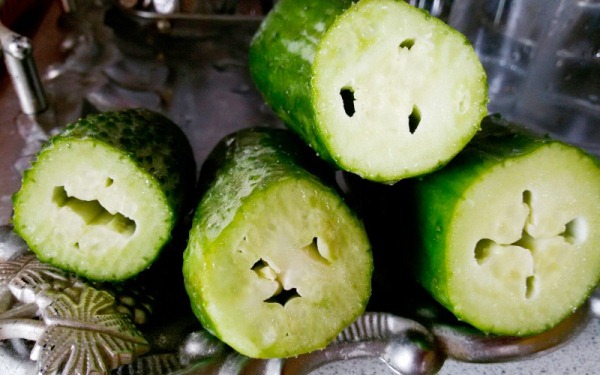 Hollow cucumbers: reasons for the appearance of hollow, what to do
Hollow cucumbers: reasons for the appearance of hollow, what to do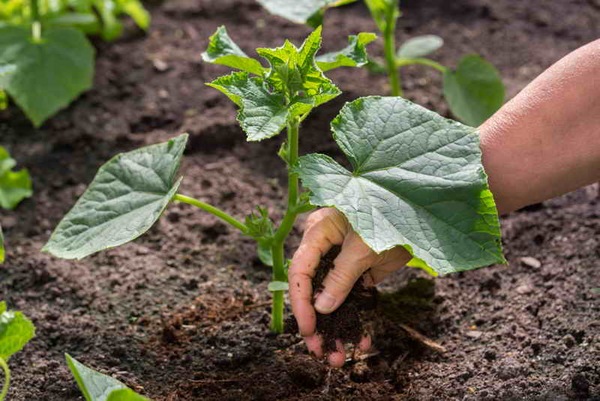 Which manure is best for cucumbers: application, how to breed
Which manure is best for cucumbers: application, how to breed